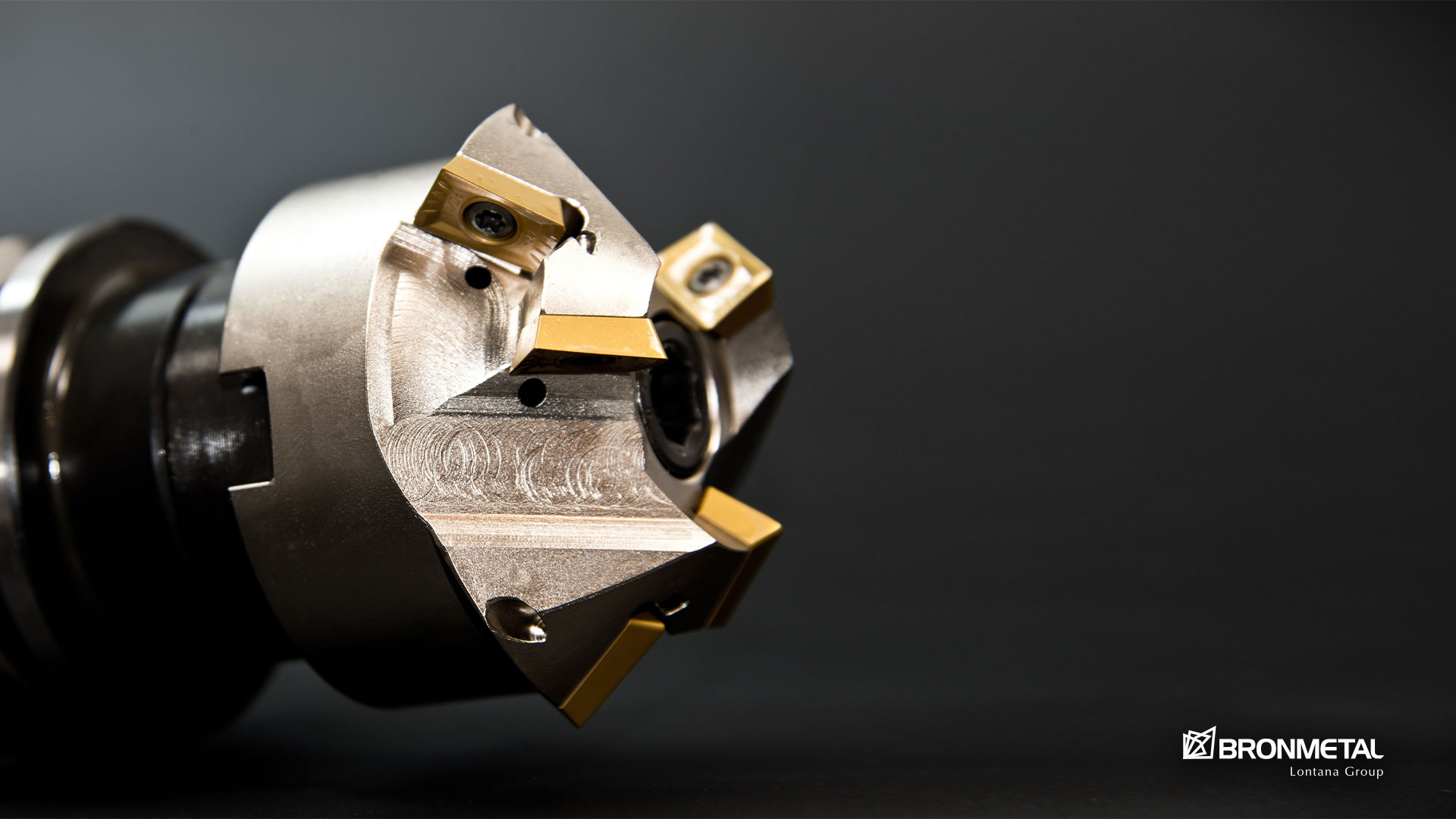Advantages of the use of non-ferrous metals for machining.
-
Due to its capacity to produce high precision and high quality parts, the machining sector is one of the sectors that is increasing its demand within an industrial sector in continuous search for greater efficiency and optimisation of its processes.
-
Bronmetal, a leading company in the sale and distribution of copper and alloys, aluminium, brass and bronze, offers a wide range of products and services for the machining sector.
Bar turning is emerging as a key sector in improving the efficiency and effectiveness of the industrial sector, due to its ability to produce high precision and high quality parts for machinery, medical instruments or electronic components; but it can also be used for the production of single parts or in small quantities.
Bar turning machines have a rotating head that holds the workpiece while a cutting tool removes material from the workpiece. A cutting tool, in turn, is designed to cut the metal in a precise and controlled manner, resulting in high quality parts.
It is a process particularly suitable for the production of high precision parts, as it allows the production of parts with very close tolerances. Tolerances are the measure of the allowable variation in the dimensions of a part and are expressed as a quantity in relation to the nominal dimension of the part. In bar turning, tolerances can be as small as a few microns, which means that parts produced by bar turning have precise and uniform dimensions.
The bar turning process also allows the production of complex shaped parts that would be difficult or impossible to produce using other manufacturing methods. This is because bar turning machines have specialised cutting tools that can cut metal into complex and controlled shapes.
In addition, the bar turning process is fast and efficient in terms of production time. This is because bar turning machines can work on multiple parts at the same time, allowing for efficient mass production.
In short, bar turning is a machining process used to produce high precision, high quality parts from metal bars or tubes by removing material. Parts produced by bar turning are used in a wide variety of applications and are particularly suitable for the production of high-precision, complex-shaped parts. The bar turning process is fast, efficient and allows the mass production of parts with very close tolerances.
Reducing lead to increase sustainability
However, over the last few years, the industry has become increasingly concerned about the need to reduce the amount of lead in brass alloys used in the production of parts.
The known negative effects that lead can have on both human health and the environment have led to measures such as the European Restriction of Hazardous Substances (RoHS) Directive. This sets strict limits on the amount of lead allowed in electrical and electronic products. As RoHS requirements have spread to other industrial sectors, manufacturers of bar turning parts have had to look for alternatives to leaded brass.
Faced with this dilemma, Bronmetal, a leader in the sale and distribution of non-ferrous metals, has developed a range of brass alloys that offer a lead-free alternative. Non-ferrous metal alloys which, by eliminating lead from the alloys, not only benefit our human health and contribute to more sustainable and environmentally responsible production, but also improve the quality of the parts produced and make them easier to work with as they are more resistant to wear from cutting tools.
Non-ferrous metals for the machining industry
Due to their intrinsic characteristics, non-ferrous metals are ideal for use in the bar turning sector. As they do not contain iron in their composition, these metals offer greater lightness, good machinability, high thermal and electrical conductivity, and better resistance to corrosion, metals such as copper, aluminium or brass are perfect for these tasks.
- High resistance: Non-ferrous metals have a high resistance to corrosion and oxidation, which makes them ideal for the production of parts for aggressive environments.
- Lightness: Non-ferrous metals are lighter than ferrous metals, allowing the manufacture of low weight, high strength parts.
- Thermal and electrical conductivity: Metals such as copper and aluminium have high thermal and electrical conductivity, essential for industries such as electronics and aerospace.
- Good machinability: Facilitates their processing in the production of parts.
- High aesthetic value: Some non-ferrous metals, such as brass and bronze, have a golden appearance, which is of great value for the development of decorative parts.
One of the most common non-ferrous metals used in the bar turning industry is aluminium. Aluminium is a lightweight and corrosion resistant metal, making it ideal for applications where high corrosion resistance and low density are required. Aluminium is also easy to machine and has good thermal conductivity, making it useful for applications where good heat dissipation is required.
Copper is another non-ferrous metal commonly used in the bar turning industry. Ductile and malleable, it has high electrical and thermal conductivity, making it ideal for the production of electronic and heating components. Finally, brass is a corrosion-resistant alloy of copper and zinc with good tensile strength and fatigue resistance.
Bronmetal solutions for the machining sectorSoluciones de Bronmetal para el sector del decoletaje
Bromental, a leading company in the sale and distribution of copper and alloys, aluminium, brass and bronze, offers a wide range of products and services for the bar turning sector, such as bars, rods, tubes and profiles in copper, aluminium and brass in different alloys and diameters, highlighting its offer of bevelled bars.
Bevel bars are an important element in the bar turning process, as their shape provides several key benefits in the production of high quality and precision parts.
Firstly, Bronmetal’s bevelled bar offers greater ease of cutting and machining. The bevelled shape of the bar helps guide the cutting tool towards the centre of the workpiece, which facilitates accurate and uniform cuts on the bar surface. This results in reduced machining time, which in turn reduces production costs and increases the efficiency of the bar turning process.
Secondly, Bronmetal’s bevelled bar allows for greater precision in the manufacture of parts. Its design reduces vibration in the part itself and, therefore, vibration in the cutting tool. This translates into greater precision in cutting and part shape, which is especially important in the production of small and complex parts, where precision and uniformity are essential to ensure part quality and functionality.
Thirdly, the bevelled Bronmetal bar is more resistant to wear and fatigue. The bevelled shape reduces stress and stress concentration on the surface of the bar, which provides greater durability and fatigue resistance. Thus, Bronmetal’s bevelled bars can withstand a greater number of machining cycles before requiring maintenance or replacement, increasing bar life and reducing production costs.
Finally, Bronmetal bevel bar is easier to handle and transport. This bar shape reduces the possibility of damaging or deforming the bar surface during handling and transport, which in turn reduces the risk of production defects and material loss.
Focused on providing tailor-made solutions for each project and ensuring customer satisfaction, Bronmetal has a team of specialised technicians capable of providing personalised advice.

